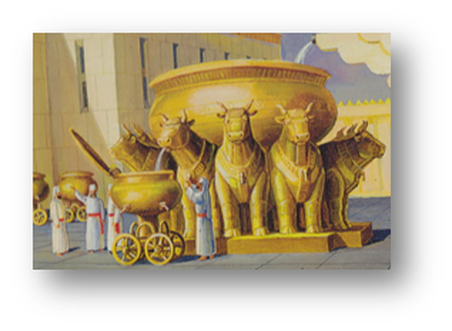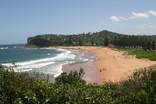
The entry of the high priest into the holy of holies typified Jesus our great High Priest entering God’s presence to present the blood. The Ark of the Covenant with its Mercy ‘Seat’ represented the presence of God in judgement and mercy.
The Altar of Incense represented the prayers of the people ascending to God.
Every item and activity there typified God’s grace toward man and pointed toward Messiah in whom everything would be fulfilled.
The one missing element in the temporary tent in the wilderness was ‘living’ water. God provided water for the ritual washing and for the people, but because they were moving, there was no permanent, running water supply. The Laver for the ritual washings had to be replenished by hand from what water God made available.
This in itself pointed to the need for permanence and a place where the temple and a living water supply were located together.
In Zion, that requirement was met. At The Place (HaMakom) set aside by God from time immemorial as the chosen centre of his activity in the Nation and for the world.
In the Letter of Aristeas of perhaps 200 BC his description of the temple includes this remarkable sentence...
‘And there is an inexhaustible supply of water, because an abundant natural spring gushes up from within the temple area.’ Aristeas goes on to explain the sacrifices and the water from the spring carrying away copious blood in ‘the twinkling of an eye’ via drains beneath the floor.
Probably the water from Gihon was piped up to fill the Bronze Sea (see picture and description in 2 Chronicles 4:2-5).
The temple was supplied by water from a natural spring—not an artifice of man. That spring can only have been Gihon from whence water was forced up by pipes (of which Aristeas also writes) to serve both the temple and the needs of the City of David.
Read 'THE PLACE HaMakom: where Jerusalem's temples stood' to get the full story of the site God had set apart from Melchizedek and Abraham's time, as His own for the true 'House of God' (Bethel) in Jerusalem.
Available from the Publisher Wipf and Stock
Available from Amazon
 RSS Feed
RSS Feed
